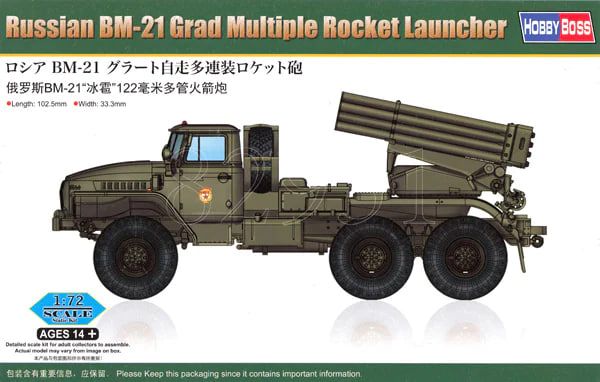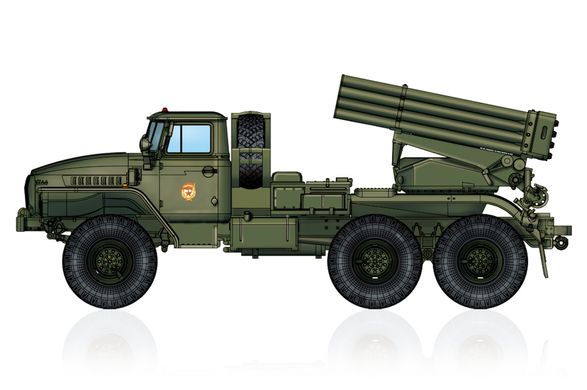The first work on the self-propelled missile launcher BM-21 "Grad" began in 1960 at the Tula plant. In 1963, the kit was adopted by the Soviet Army. Serial production began in the same year and continues to this day at Fabryka Spław in Tula. The BM-21 complex was developed as a successor to the BM-14 launchers. Compared to its predecessor, it had a very large number of modifications. First of all, a new wheeled chassis based on the URAL-375D truck in the 6x6 wheel formula was used. The BM-21 also comes with a new 122 mm launcher (vs. 140 mm in the BM-14). The launcher also holds 40 rounds in the combat position, compared to 16 on the BM-14. The effective firing range increased significantly: if the BM-14 could hit targets at a distance of up to 9,800 m, then the BM-21 "Grad" could fire at targets at a distance of 20,400 m! The main task of the BM-21 still remained the destruction of surface targets, such as accumulations of enemy artillery, field fortifications or places of its concentration. The BM-21 kit was exported to many countries, including: Algeria, Angola, Egypt, North Korea, Syria, Vietnam, as well as Poland and Czechoslovakia. BM-21 participated in a large number of conflicts - for example, the Vietnam War (1964-1975), the Afghan War (1979-1989), the Iran-Iraq War (1979-1989) or the Persian Gulf War of 1991.


















